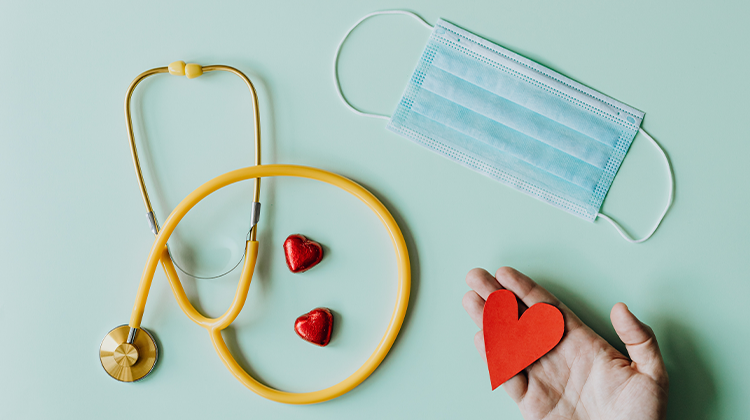We live in an age where most information is available on the internet, but tacit understandings of culture and customs are still difficult to access. In this article, I will introduce some Japan-specific characteristics related to medical clinics.
Winter will soon be over. Many of you may be planning a trip to Japan at the moment. Traveling is fun, but it can also bring unexpected trouble. To ensure that most of your holiday memories are not of travel-related hassles, it is important to anticipate and prepare for emergencies in advance.
Overview of Japanese clinics
In Japan, premises where doctors or dentists practice medicine or dentistry (except clinics that specialize in dentistry only) and which do not have in-patient facilities for patients, or with in-patient facilities for 19 patients or fewer are classified as clinics rather than hospitals (1). The most common providers of clinics in Japan are medical corporations, accounting for 40% of the total. This is followed by individual medical practitioners, who also account for around 40% of the total. In contrast to this, the percentage of the national government, public medical institutions, and social insurance-related organizations total around 5% (2). So unless you are going to have a major operation, you will go to the nearest private clinic from where you are staying.
Where can you find Japanese clinics?
In urban areas such as Tokyo and Osaka, there are many clinics within walking distance of any district. Most private clinics in Japan are not very large and are about the size of a café or hair salon in urban areas. Clinics in buildings can be even smaller. Some have exteriors and interiors that are so stylish that you might not notice they are clinics at first. Some are located in shopping malls. Some are new as if they were built yesterday, some are old-fashioned as if time has stood still for more than 50 years. The atmosphere of private clinics in Japan really depends on the taste of the medical corporation or the owner. Still, there is little difference in the price unless it is for cosmetic treatment. When you arrive at your hotel, search for clinics in your neighborhood using Google Map.
Possible barriers to visiting Japanese clinics:
Language
Service in foreign languages is only available in some clinics in Japan. Even in clinics that state that they are "English-speaking", there is often only one English-speaking staff member on duty, and when that person is taking time off, no one will be available to help you in English. Even so, if the injury is minor, it might be possible to communicate with the medical staff. If you suddenly become ill and the cause is unknown, or if you have a chronic illness or allergy that is difficult to explain, it is safer to choose a clinic for foreigners or a clinic with foreign doctors on staff. Here is the Tourism Agency website you can search for clinics and information in various languages.
Shoes
In some Japanese clinics, you may have to remove your shoes and change into slippers when entering. This practice was a device to prevent tetanus bacteria, micro-organisms, and mold from mud on the shoes from being introduced into the clinic when the roads were not yet paved. Now that the roads are paved, such problems have largely disappeared, and the hygiene of shared slippers tends to be seen as a problem more than that. So most new clinics allow patients to enter with their shoes on. If you don't want to take your shoes off in a clinic, check before you go whether they accept that or not; you can probably tell this from the photos of the clinic's interior on Google Maps.
Waiting time
As you know, Japan is a country with a large elderly population. In addition, Japan's national health insurance system is very inexpensive for individuals to pay for medical care, with those aged 70 and over paying 20% of the cost and those aged 75 and over paying 10% (3). For example, a medical examination alone costs only a few hundred yen per visit. This is why some elderly people go to the clinic almost every morning. Because there are so many of them, some clinics complete elderly group consultations first, putting off seeing the other patients until later. Therefore, you may have to wait for more than an hour if you go in the morning. For clinics with prominent reviews stating "long waiting time", try to go in the early afternoon, just after the lunch break.
Although Japan has a National Medical Insurance program, tourists are not covered by it, so make sure you purchase comprehensive travel insurance which includes medical care before you go. Not confident enough to go to the clinic on your own? Ask a teacher who lives in your travel destination directly in a Japanese lesson about the appointment process and the necessary medical vocabulary at the clinic.
References:
1. Ministry of Health, Labour and Welfare of Japan (2008), Glossary of terms, https://www.mhlw.go.jp/toukei/saikin/hw/iryosd/08/dl/02.pdf
2. Ministry of Health, Labour and Welfare of Japan (2021), Overview of the 2021 Medical Facilities (Dynamic) Survey and Hospital Report, https://www.mhlw.go.jp/toukei/saikin/hw/iryosd/21/dl/02sisetu03.pdf
3. Ministry of Health, Labour and Welfare of Japan (2020), Partial (co-payment) ratio of medical expenses, https://www.mhlw.go.jp/content/000937919.pdf







